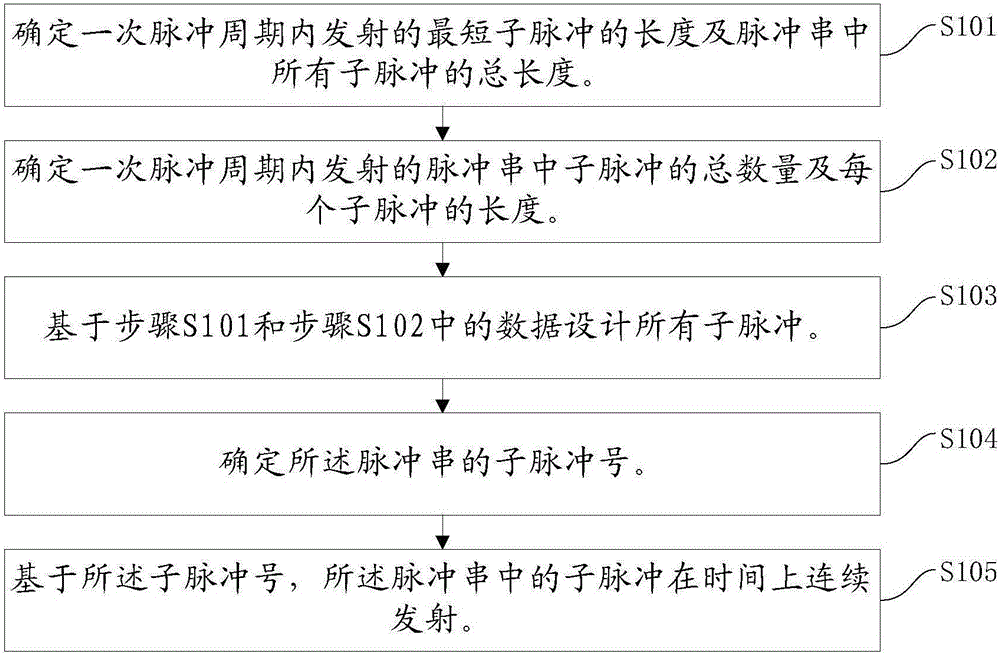Method for reducing active sonar detecting blind area
A technology of active sonar and blind area, applied in the field of sonar and radar, it can solve the problem of slow update of target data, shorten the required time, improve the detection efficiency, and achieve the effect of low cost
- Summary
- Abstract
- Description
- Claims
- Application Information
AI Technical Summary
Problems solved by technology
Method used
Image
Examples
Embodiment 1
[0028] figure 1 A schematic flowchart of a method for reducing blind spots in active sonar detection provided by Embodiment 1 of the present invention is shown. like figure 1 Said, the method includes the following steps:
[0029] S10, for different detection distances, the active sonar continuously emits sub-pulses of different lengths within a pulse period.
[0030] Preferably, in order to make the sub-pulses independent of each other, the sub-pulses of different lengths in the pulse train transmitted by the active sonar within one pulse period adopt code division and / or frequency division design. In order to further reduce the impact of the active pulse on the detection blind area of the system, when the active sonar continuously transmits sub-pulses of different lengths within a pulse period, the transmission method adopted is: the short sub-pulse is in front and the long sub-pulse is in the back.
[0031] specifically, figure 2 A schematic flow chart of the active ...
PUM
 Login to View More
Login to View More Abstract
Description
Claims
Application Information
 Login to View More
Login to View More - R&D
- Intellectual Property
- Life Sciences
- Materials
- Tech Scout
- Unparalleled Data Quality
- Higher Quality Content
- 60% Fewer Hallucinations
Browse by: Latest US Patents, China's latest patents, Technical Efficacy Thesaurus, Application Domain, Technology Topic, Popular Technical Reports.
© 2025 PatSnap. All rights reserved.Legal|Privacy policy|Modern Slavery Act Transparency Statement|Sitemap|About US| Contact US: help@patsnap.com



